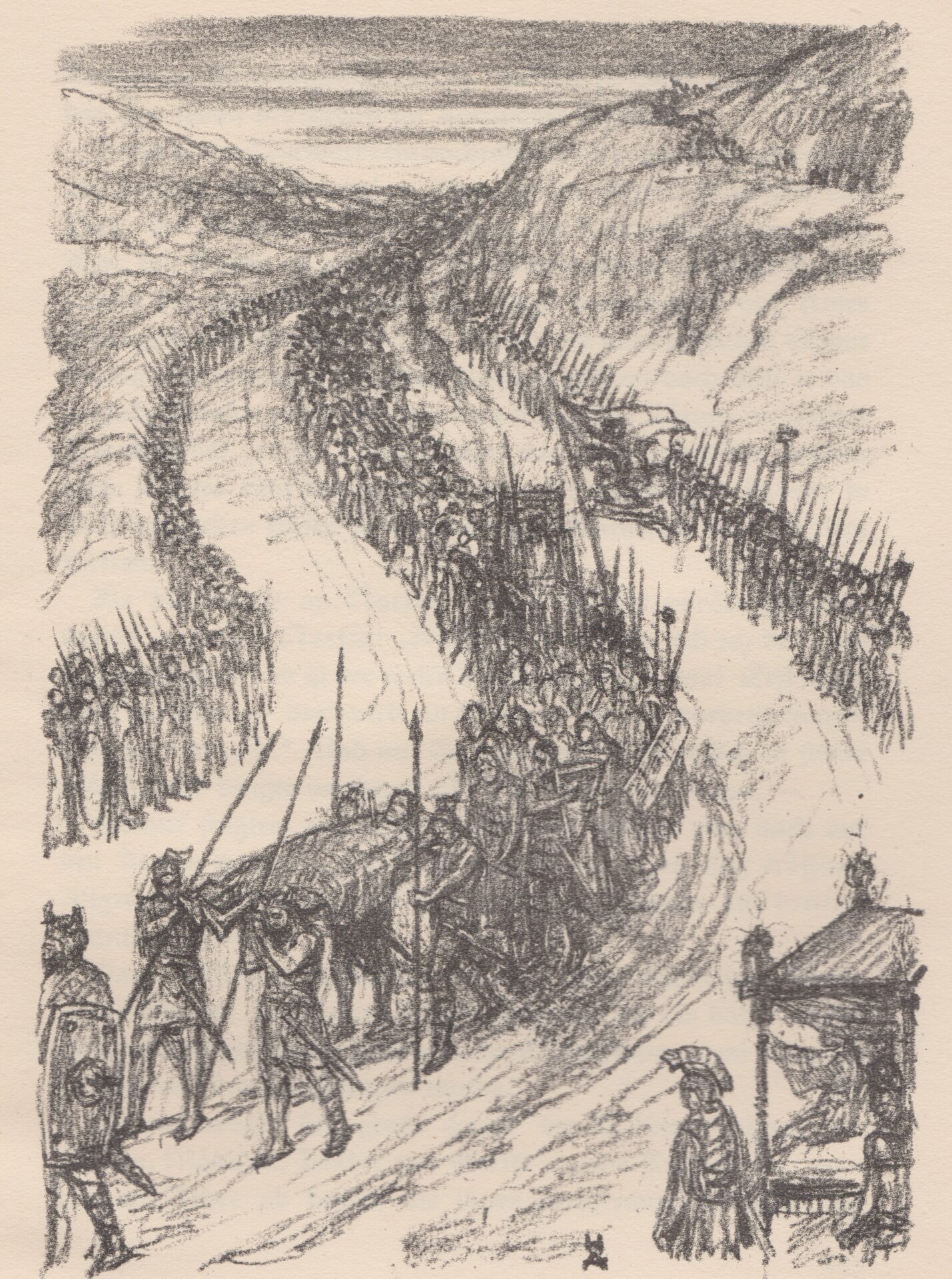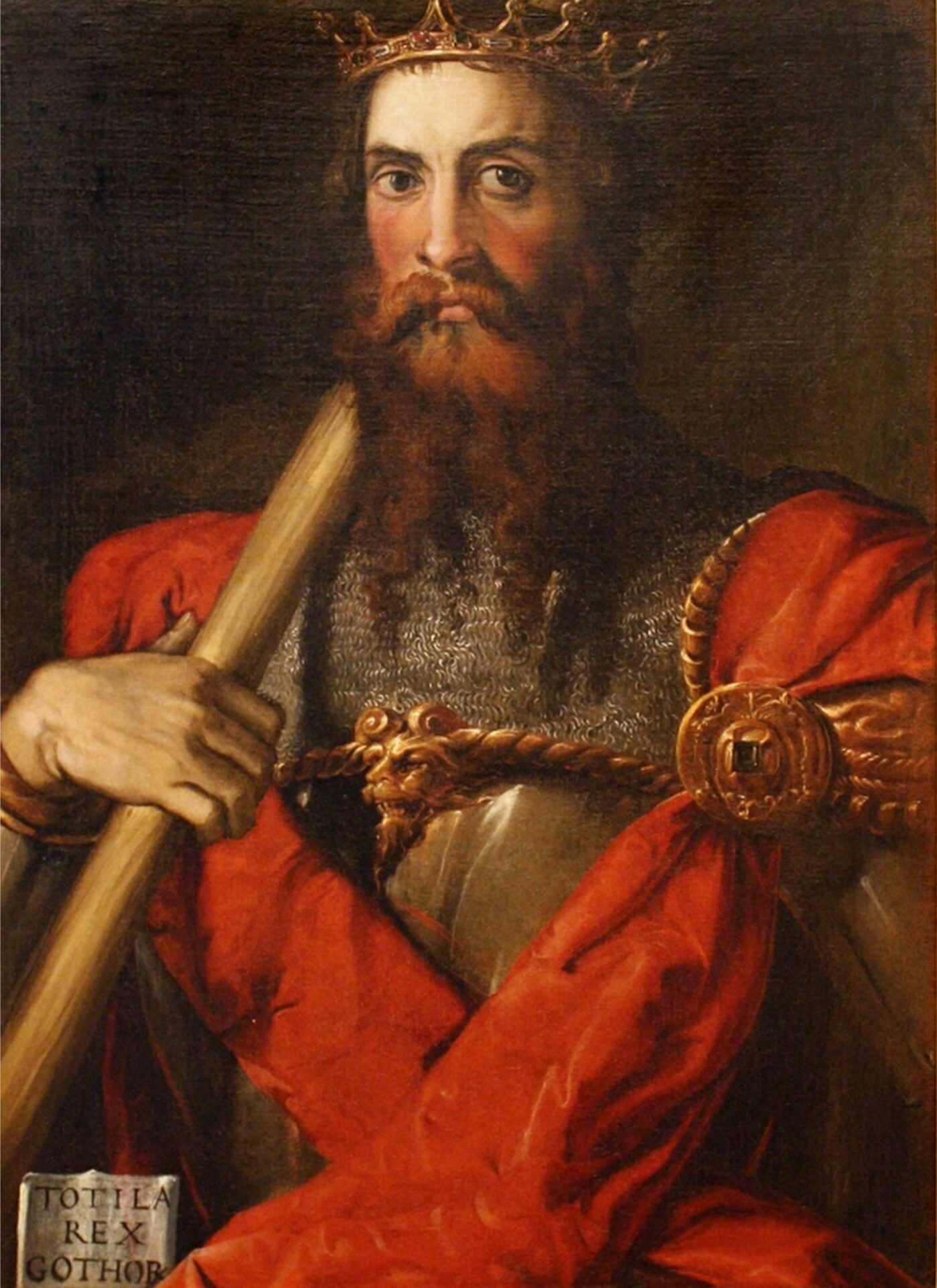When people think of great Byzantine generals, names like Belisarius often come first. Yet, in the middle of the 6th century, another commander, seemingly the opposite of the ideal warrior, rose to prominence. Born a eunuch, trained in the intrigues of the imperial court rather than the battlefield, Narses nonetheless emerged as one of Emperor Justinian I’s most successful military leaders. His most famous triumph, the victory at the Battle of Taginae in 552, ended the reign of the Ostrogothic king Totila and secured Italy for the Eastern Roman Empire.

Early Life and Rise at Court
Narses was born around 478 AD in Persarmenia, a frontier region caught between the Persian and Roman spheres of influence. As a eunuch, he could never hope for dynastic power, but this very status made him a trusted presence in the imperial palace. Eunuchs were seen as loyal servants who could not establish rival families.
He entered imperial service during the reign of Justin I and quickly proved his worth as an administrator and diplomat. Under Justinian I, he rose to the influential post of praepositus sacri cubiculi, or grand chamberlain, managing the emperor’s household and serving as a political adviser. In an age when the court was as dangerous as any battlefield, Narses thrived through tact, intelligence, and discretion.
Role in the Nika Riots
In January 532, Constantinople erupted in the infamous Nika Riots, a violent uprising sparked by rival chariot racing factions but soon aimed at overthrowing Justinian himself. While the general Belisarius prepared to strike militarily, Narses was sent into the Hippodrome with gold to bribe and divide the factions. His quiet diplomacy convinced one group to abandon the revolt, weakening the rebels’ unity.
After this, Belisarius and his troops stormed the Hippodrome, slaughtering thousands. Though Belisarius delivered the decisive military blow, Narses’s behind-the-scenes work ensured the emperor’s survival. The episode demonstrated his ability to blend political maneuvering with strategic thinking — qualities that would later serve him on campaign.
First Military Commands
Justinian valued Narses for his organizational skill and loyalty, but soon began to test his ability in the field. During the early stages of the Gothic War in Italy (538–539), Narses was sent to support Belisarius. While the two men respected each other, they often disagreed on strategy. Narses favored more decisive action, while Belisarius preferred caution when resources were scarce.
Their disagreements occasionally caused friction and led to delays in operations. Eventually, Narses was recalled to Constantinople, but he had proven himself a capable leader, especially in managing supply lines and winning local support.
The Gothic War Resumed – Narses Takes Command
By 550, the war in Italy had turned against the Byzantines. The Ostrogothic king Totila had retaken much of the peninsula, and Justinian needed a decisive response. In 551, the emperor appointed Narses as supreme commander in Italy, granting him full authority and an unusually large army of about 30.000 men. This army was a mix of Byzantine troops, Lombards, Heruls, and other allies.
Rather than sail directly to Italy, Narses led his forces on an overland march through the Balkans, avoiding enemy fleets and keeping his army intact. The route was long and difficult, but it allowed him to arrive in northern Italy fully prepared for battle.

The Battle of Taginae – Crushing Totila
In July 552, Narses faced Totila near Taginae (modern Gualdo Tadino in Umbria). His army was outnumbered, but Narses deployed his troops in an unorthodox formation: heavily armed infantry in the center, flanked by archers positioned in a curved line, with cavalry held in reserve behind the wings.
When the Goths charged the center, they came under devastating arrow fire from both flanks. The Gothic cavalry faltered, and the Byzantine infantry held firm. At the critical moment, Narses unleashed his cavalry to attack the weakened enemy. Totila was mortally wounded during the retreat, and his army collapsed. The victory shattered Gothic morale and marked a turning point in the war.

The Final Defeat of the Goths – The Battle of Mons Lactarius
Despite the loss of Totila, the Goths rallied under a new king, Teia. In late 552 or early 553, the two armies clashed at Mons Lactarius, near Vesuvius. The battle was fierce, with both sides fighting for two days. Teia was killed, and the remnants of the Gothic army surrendered soon after.
This victory ended organized Ostrogothic resistance in Italy. For the first time since the fall of the Western Roman Empire in 476, the Italian peninsula was once again under imperial control — largely thanks to Narses’s leadership.

Campaign Against the Franks and Alamanni
Narses’s challenges were not over. In 553, Frankish and Alamannic forces invaded northern Italy, hoping to take advantage of the chaos left by the Gothic War. Narses adopted a defensive strategy, avoiding premature battles and allowing the invaders to overextend their supply lines.
When the moment was right, he struck decisively, defeating the Franks and Alamanni and securing the Po Valley. These campaigns ensured that Italy remained in Byzantine hands and prevented further incursions from the north.
Civil Administration and Controversies
With the wars over, Narses was appointed governor of Italy in 554. He implemented Justinian’s Pragmatic Sanction, reorganizing Italy’s administration, restoring the senatorial order in Rome, and reestablishing tax collection. While his governance brought stability, heavy taxation and the presence of foreign troops caused resentment among some Italians.
Later sources suggest that Empress Sophia, who succeeded Theodora as the leading female influence in the court, disliked Narses and may have pushed for his recall. A famous, though likely apocryphal story claims that when Sophia told him to return to the palace and “serve in the women’s quarters,” Narses replied that he would “weave her some fine wool,” a veiled threat to stir up trouble in Italy.
Whether or not this exchange happened, Narses was eventually removed from his post. Some accounts claim he invited the Lombards into Italy in revenge, though this too remains uncertain and is probably a lie.
Death and Legacy
Narses retired either to Constantinople or Naples, where he likely died around 573, in his mid-nineties, which is an extraordinary age for the period. His long life spanned the final decades of the Western Roman Empire’s memory and the height of Justinian’s reconquests.
Unlike many generals, Narses never sought a throne or independent power. His position as a eunuch barred him from dynastic ambitions, but it also gave him a rare freedom to serve without personal political threat to the emperor. Even hostile sources admitted his organizational genius, attention to detail, and adaptability in battle.
Though sometimes overshadowed by Belisarius, Narses’s victories were decisive in fulfilling Justinian’s dream of restoring Roman authority in the West. His ability to command a multi-ethnic army, maintain discipline, and execute innovative strategies marks him as one of the great military minds of his era.
Hello, my name is Vladimir, and I am a part of the Roman-empire writing team.
I am a historian, and history is an integral part of my life.
To be honest, while I was in school, I didn’t like history so how did I end up studying it? Well, for that, I have to thank history-based strategy PC games. Thank you so much, Europa Universalis IV, and thank you, Medieval Total War.
Since games made me fall in love with history, I completed bachelor studies at Filozofski Fakultet Niš, a part of the University of Niš. My bachelor’s thesis was about Julis Caesar. Soon, I completed my master’s studies at the same university.
For years now, I have been working as a teacher in a local elementary school, but my passion for writing isn’t fulfilled, so I decided to pursue that ambition online. There were a few gigs, but most of them were not history-related.
Then I stumbled upon roman-empire.com, and now I am a part of something bigger. No, I am not a part of the ancient Roman Empire but of a creative writing team where I have the freedom to write about whatever I want. Yes, even about Star Wars. Stay tuned for that.
Anyway, I am better at writing about Rome than writing about me. But if you would like to contact me for any reason, you can do it at contact@roman-empire.net. Except for negative reviews, of course. 😀
Kind regards,
Vladimir
